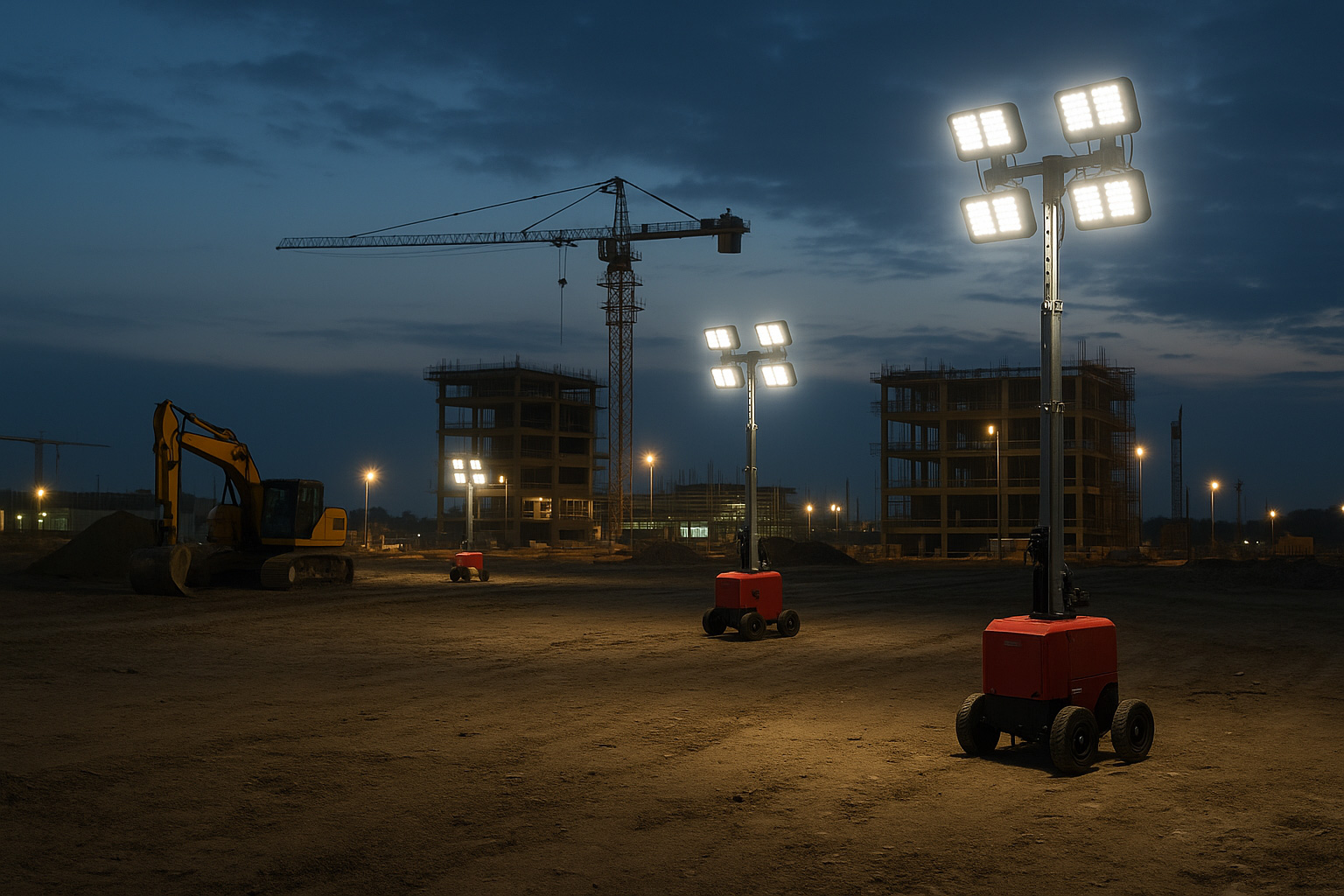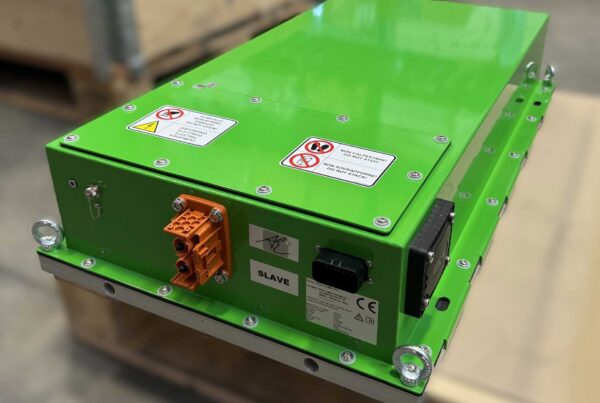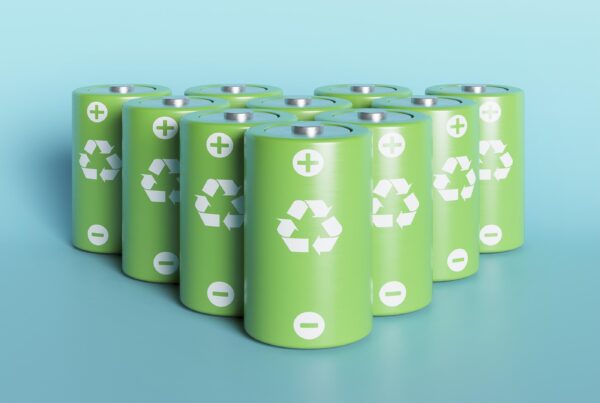Everything you need to know to choose the best solution
Battery-powered LED lighting towers are transforming the world of mobile lighting. Whether on construction sites, during night events, in emergency scenarios or industrial settings, the demand for efficient, long-lasting and low-impact lighting solutions is constantly growing.
In this context, Archimede Energia, a specialized manufacturer of high-performance lithium batteries for industrial and mobile applications, stands as a trusted partner for those seeking reliable, safe and easy-to-integrate energy storage systems. Our battery solutions for lighting towers combine advanced technology, simple installation and extended lifespan, ensuring maximum performance even in the most demanding conditions.
In this comprehensive guide, we’ll explore:
- The advantages of lithium batteries over traditional solutions
- Ideal capacity and runtime for LED lighting towers
- Maintenance best practices
- How to choose the right battery
- A technical FAQ section
Why choose a lithium battery for lighting towers?
In the field of mobile and temporary lighting, the battery choice plays a crucial role in terms of operational efficiency, maintenance costs and service continuity. Lithium batteries—especially LiFePO4 (Lithium Iron Phosphate)—are currently the most efficient and safest energy storage technology for LED lighting towers.
Unlike lead-acid batteries still found in outdated systems, lithium-based solutions offer significant benefits, both technical and economic. Let’s take a closer look.
Top advantages of lithium batteries for LED lighting towers
1. Higher energy efficiency
Lithium batteries reach a conversion efficiency of up to 95%, compared to 70–80% for lead-acid alternatives. More stored energy is effectively used to power the LED system, minimizing waste and improving overall performance.
2. Lightweight and easy to handle
Up to 70% lighter than lead-acid batteries of the same capacity, lithium batteries allow easier transport, handling and installation—ideal for mobile lighting towers or hard-to-reach locations.
3. Fast charging times
Lithium batteries recharge in just 3–6 hours, compared to 8–12 hours for lead-acid models. This reduces downtime and increases tower availability and operational continuity.
4. Longer lifespan and cycle resistance
LiFePO4 cells withstand 2,000–5,000 charge/discharge cycles, versus just 300–500 for lead-acid batteries. This translates to 5–10 years of reliable use, even in intensive scenarios, with significantly lower replacement and maintenance costs.
5. No memory effect
Lithium batteries can be partially charged without loss of capacity—unlike older lead-acid batteries affected by the memory effect.
6. Greater environmental sustainability
Lithium technology provides:
- Fewer waste materials due to longer lifespan
- Lower overall environmental impact compared to lead-acid
- Safer chemistry (LiFePO4 batteries contain no cobalt or highly polluting materials)
Ideal applications for lithium-powered lighting towers
Thanks to their performance, lithium batteries are perfect for powering LED lighting towers in:
- Construction and roadwork sites
- Emergency response and civil protection
- Nighttime outdoor events, fairs, public gatherings
- Military operations and isolated field installations
- Industrial environments and poorly lit logistics areas
Every lithium-powered tower ensures reliability, extended runtime and simple management—even in extreme conditions.
Want to calculate the expected runtime of a lithium battery for your system?
Check out our article on battery runtime or contact the technical team at Archimede Energia for tailored support.
Battery runtime for lithium-powered lighting towers
Runtime is one of the key factors when choosing a battery-powered LED tower. With LiFePO4 technology, it’s possible to achieve longer operational times compared to traditional systems, thanks to better energy efficiency.
Key factors affecting runtime:
- Battery capacity (e.g., 100Ah, 200Ah)
- System voltage (12V, 24V, 48V)
- Power rating of the installed LEDs (e.g., 100W, 200W, 400W)
- Lighting system efficiency
- Ambient conditions (extreme temperatures can reduce performance)
Example Calculation:
- 100Ah battery at 12.8V = 1280Wh available
- 200W LED tower
- Theoretical runtime = 1280Wh / 200W = 6.4 hours
- Actual runtime (85% efficiency) ≈ 5–6 hours
For complex setups, such as high-power LED towers or harsh environments, correct battery sizing is essential to avoid interruptions.
Ask our team for the detailed comparative runtime table.
Lithium battery maintenance and lifespan
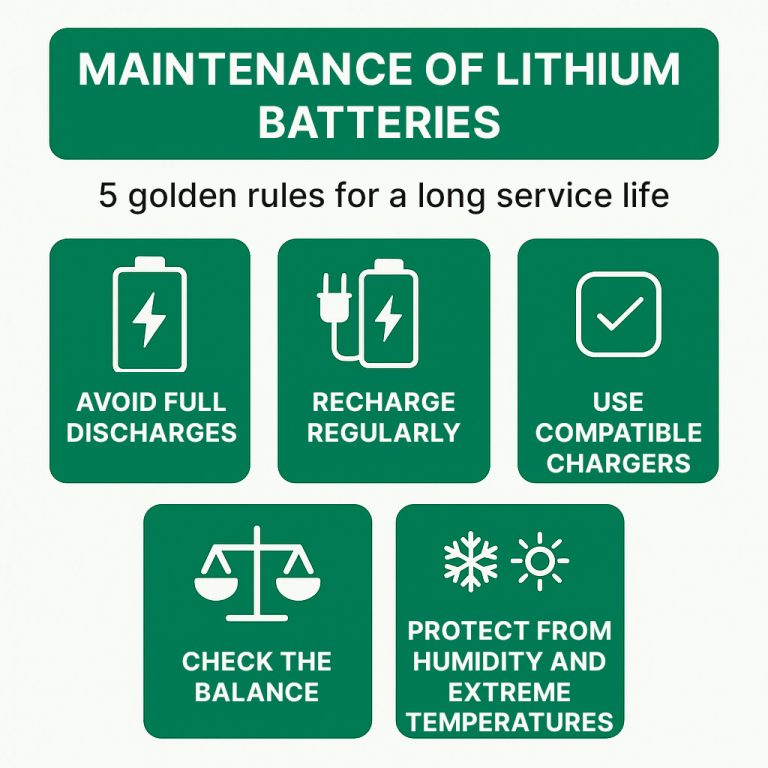
One of the key advantages of LiFePO4 lithium batteries is the minimal maintenance required compared to lead-acid or other traditional technologies. This simplifies operations and reduces downtime and service costs.
Still, some best practices are essential to ensure long-term safety and optimal performance.
Best practices for lithium battery maintenance
- Avoid deep discharges: Keep charge above 20% to protect the cells.
- Charge regularly: Avoid leaving batteries fully discharged or fully charged for long periods.
- Use a BMS-compatible charger: Ensure proper communication and protection.
- Check cell balancing: Especially in high-amperage systems or heavy usage scenarios.
- Protect from humidity and temperature extremes: Ideal range is 0°C to 45°C.
How long do lithium batteries last in lighting towers?
With proper care, a lithium LiFePO4 battery can operate for 5–10 years with:
- Up to 2,000 cycles in intensive daily use
- Up to 5,000 cycles in moderate, stable conditions
Lifespan depends on:
- Depth and frequency of charge/discharge
- Usage type (continuous vs. intermittent)
- Quality of components (cells, BMS, wiring)
- Proper storage and handling
Archimede Energia batteries deliver high reliability even in critical applications, lowering overall maintenance costs significantly.
How to choose the right lithium battery for your lighting tower
Choosing the right lithium battery involves technical analysis. Here are the key factors:
- Nominal Voltage: Must match your system (12V, 24V, 48V)
- Capacity (Ah): Higher Ah = longer runtime; balance with weight and size
- Lithium Chemistry Type:
- LiFePO4: Stable, safe, ideal for industrial use
- NMC: Higher energy density, less thermal stability
- BMS and IoT Integration:
-
- All Archimede Energia batteries include smart BMS
- Remote monitoring available via AE Connect
- Weight and Dimensions:
-
- Crucial for mobile or portable tower applications
Contact our technical department to design the ideal solution for your LED tower fleet.
Compare our products.
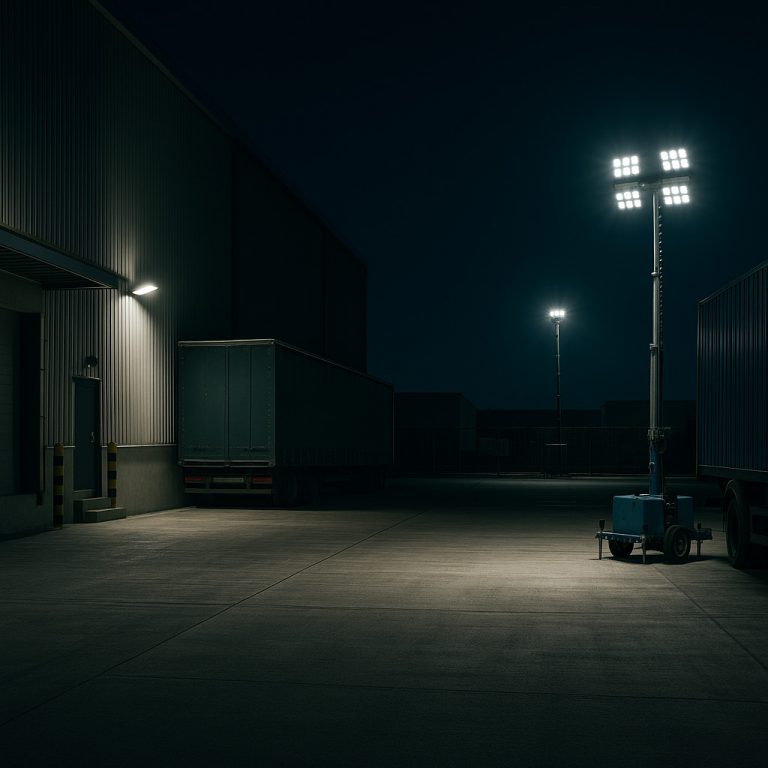
FAQ – Frequently Asked Questions
How long do lithium batteries last in lighting towers?
Archimede Energia’s LiFePO4 batteries last up to 5,000 cycles, maintaining high performance over years of use.
Can I replace a lead-acid battery with lithium?
Yes, but it’s not just plug & play. You must check:
- Voltage compatibility
- Integration with the current system
- BMS and charger upgrade requirements
Are lithium batteries safe?
LiFePO4 cells are among the safest on the market: resistant to heat, impact and short circuits.
Every Archimede battery features both active and passive protection systems.
How long does it take to recharge?
Depends on battery size and charger power:
- ~3 hours for 50–80Ah batteries
- Up to 6 hours for 150–200Ah batteries
Can I monitor battery status remotely?
Yes. With AE Connect, you can:
- Monitor real-time charge levels
- Receive anomaly alerts
- Analyze your entire battery fleet
For more technical questions:
Contact our support team → info@archimede-energia.com
More Efficiency, Less Maintenance, Greater Autonomy
Lithium batteries are the smartest and most sustainable choice for powering LED lighting towers. Reliability, fast charging, safety and long life are just some of the reasons why this technology represents the future of mobile lighting.
As specialized manufacturers, at Archimede Energia we design and build ready-to-use lithium battery packs engineered for maximum performance and seamless integration.
Want to boost the efficiency of your lighting towers?
Explore our custom solutions or request a technical consultation.


